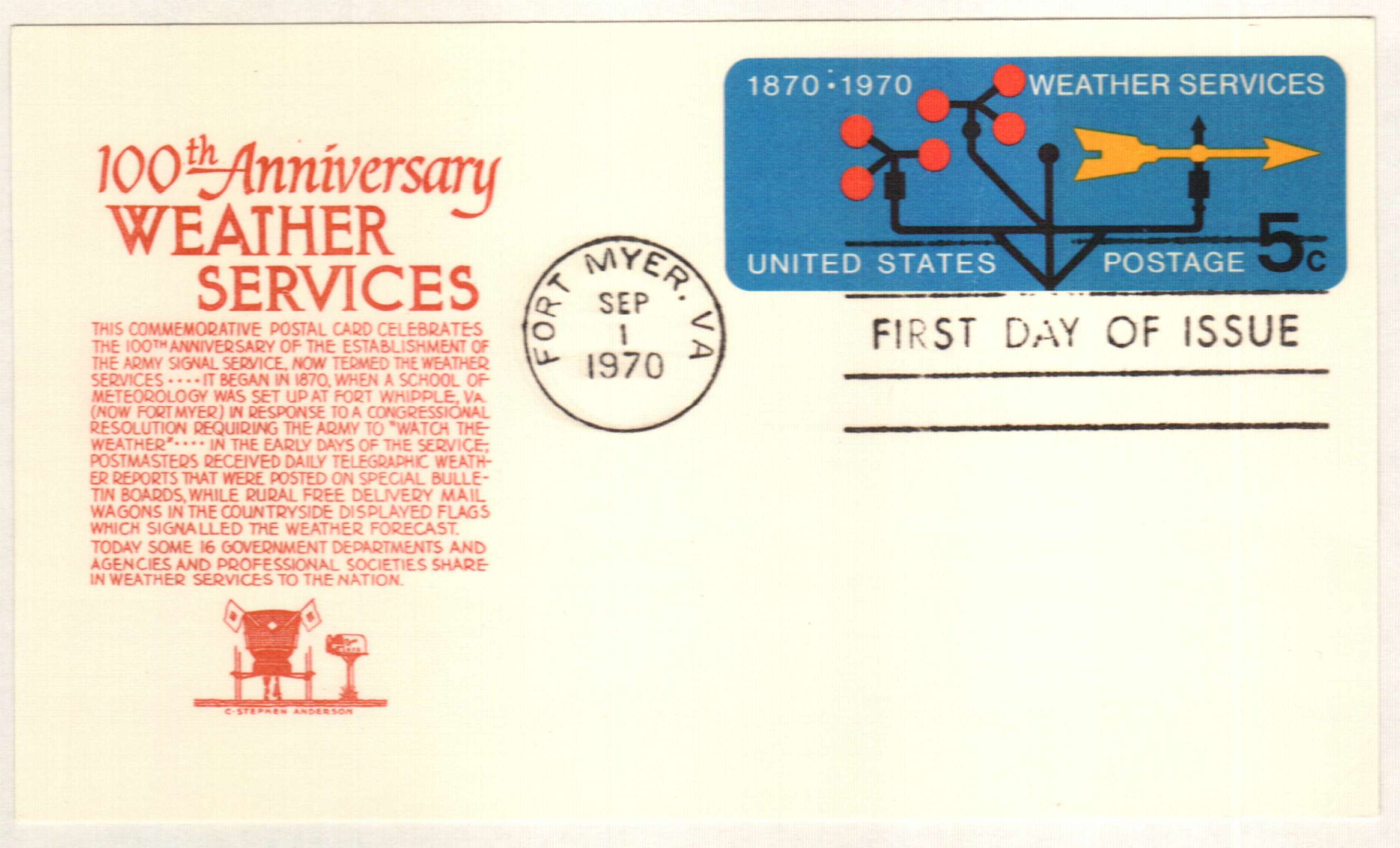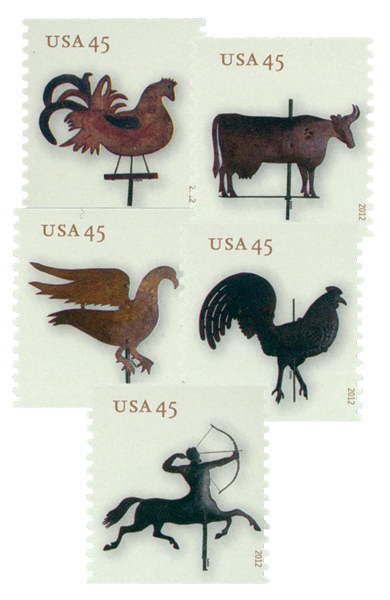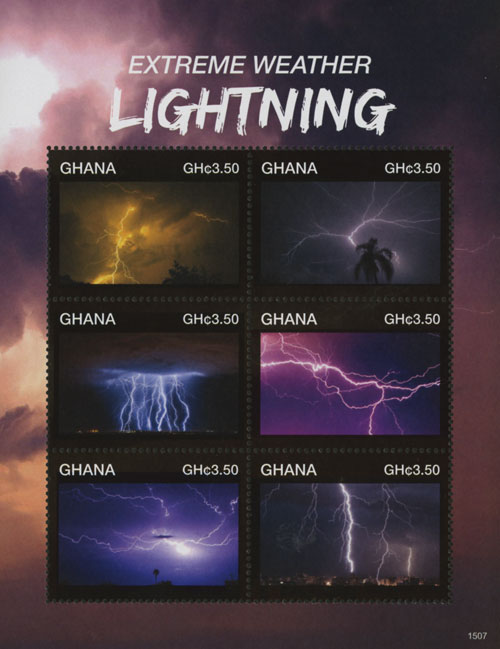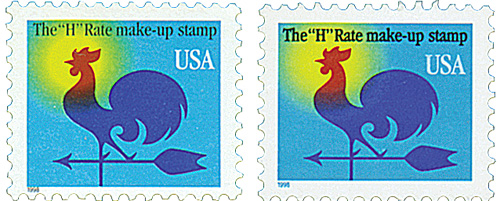
# 3257-58 - 1998 1c Weather Vane, set of 2 stamps
1998 1¢ Weather Vane
City: Troy, NY
Creation Of The U.S. Weather Bureau
Since the early days of the United States, Americans have enjoyed keeping track of the weather. Presidents George Washington and Thomas Jefferson regularly recorded the temperature and other weather observations in their journals throughout their adult lives.

A major milestone in the recording of weather in the US came in 1849 when the Smithsonian gave weather instruments to telegraph companies. This allowed for the creation of a large national network in which people could observe the weather, share it across the country, and analyze the data. These observations were returned to the Smithsonian, which created weather maps.

This network grew substantially over the coming years and by the late 1860s, many believed they could use this data to begin forecasting the weather. However, in order to do this for the whole country, a governmental agency would be needed. So in 1870, a joint Congressional Resolution was submitted, calling on the Secretary of War to start making meteorological observations at military stations and to provide notices of storms. Congress passed the resolution and President Ulysses S. Grant signed it into law on February 9, 1870.

The new agency was known as The Division of Telegrams and Reports for the Benefit of Commerce. The Secretary of War led it because Congress believed that “military discipline would probably secure the greatest promptness, regularity, and accuracy in the required observations.” Within the Department of War, the new agency was part of the Army Signal Service.
In 1890, the agency was renamed the US Weather Bureau and moved to the Department of Agriculture and at that time became a civilian enterprise. They soon began issuing flood warnings and fire weather forecasts and issuing the first daily national weather maps.

The bureau was moved once again, to the Department of Commerce in 1940. Then in 1966, it was made part of the Environmental Science Services Administration. And then in 1970, the US Weather Bureau became the National Weather Service, the name it still holds today. Today the National Weather Service is headquartered in Silver Spring, Maryland, employs 5,000 people, and collects data from 122 local weather forecast offices.
Click here to visit the National Weather Service website.
1998 1¢ Weather Vane
City: Troy, NY
Creation Of The U.S. Weather Bureau
Since the early days of the United States, Americans have enjoyed keeping track of the weather. Presidents George Washington and Thomas Jefferson regularly recorded the temperature and other weather observations in their journals throughout their adult lives.

A major milestone in the recording of weather in the US came in 1849 when the Smithsonian gave weather instruments to telegraph companies. This allowed for the creation of a large national network in which people could observe the weather, share it across the country, and analyze the data. These observations were returned to the Smithsonian, which created weather maps.

This network grew substantially over the coming years and by the late 1860s, many believed they could use this data to begin forecasting the weather. However, in order to do this for the whole country, a governmental agency would be needed. So in 1870, a joint Congressional Resolution was submitted, calling on the Secretary of War to start making meteorological observations at military stations and to provide notices of storms. Congress passed the resolution and President Ulysses S. Grant signed it into law on February 9, 1870.

The new agency was known as The Division of Telegrams and Reports for the Benefit of Commerce. The Secretary of War led it because Congress believed that “military discipline would probably secure the greatest promptness, regularity, and accuracy in the required observations.” Within the Department of War, the new agency was part of the Army Signal Service.
In 1890, the agency was renamed the US Weather Bureau and moved to the Department of Agriculture and at that time became a civilian enterprise. They soon began issuing flood warnings and fire weather forecasts and issuing the first daily national weather maps.

The bureau was moved once again, to the Department of Commerce in 1940. Then in 1966, it was made part of the Environmental Science Services Administration. And then in 1970, the US Weather Bureau became the National Weather Service, the name it still holds today. Today the National Weather Service is headquartered in Silver Spring, Maryland, employs 5,000 people, and collects data from 122 local weather forecast offices.
Click here to visit the National Weather Service website.










